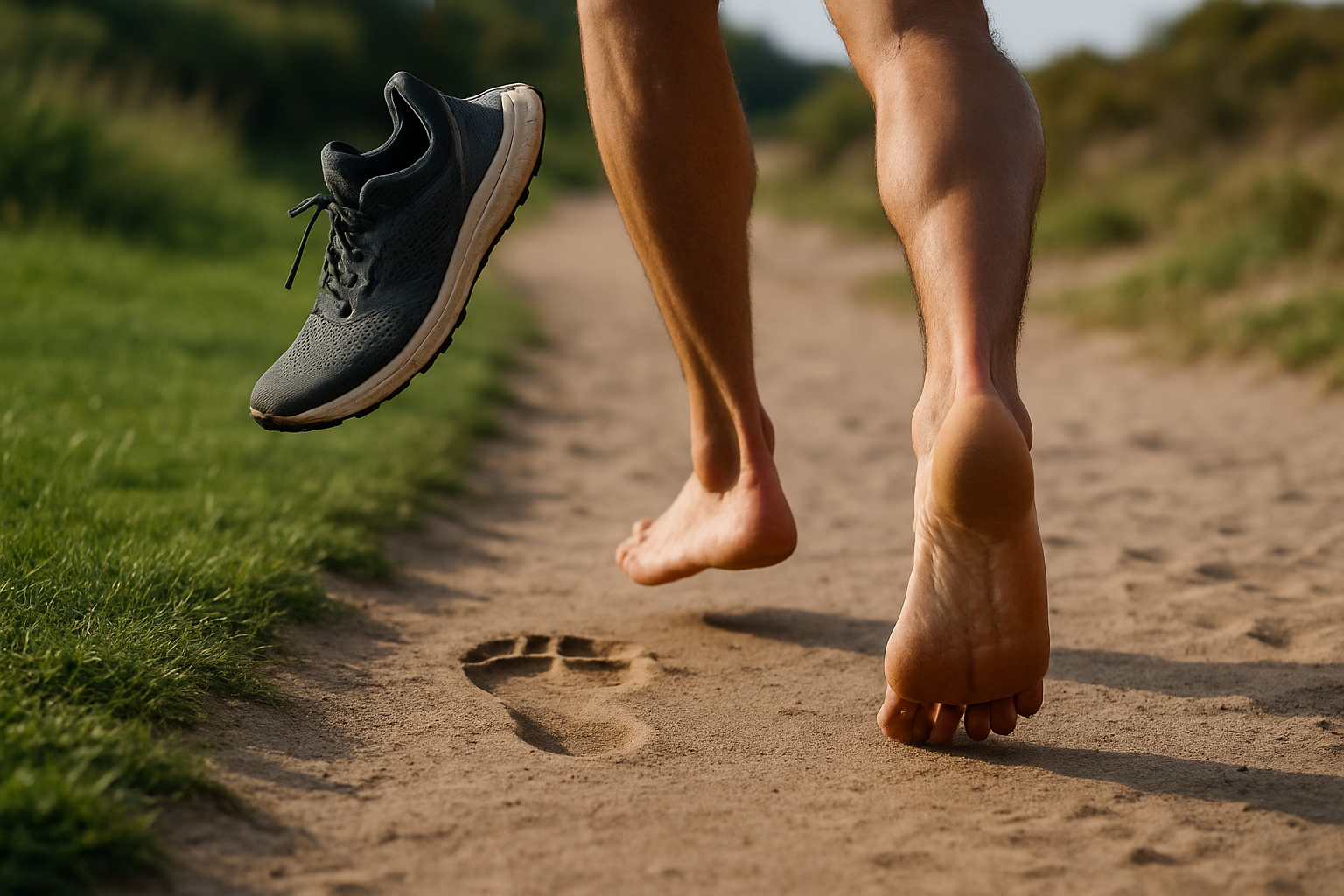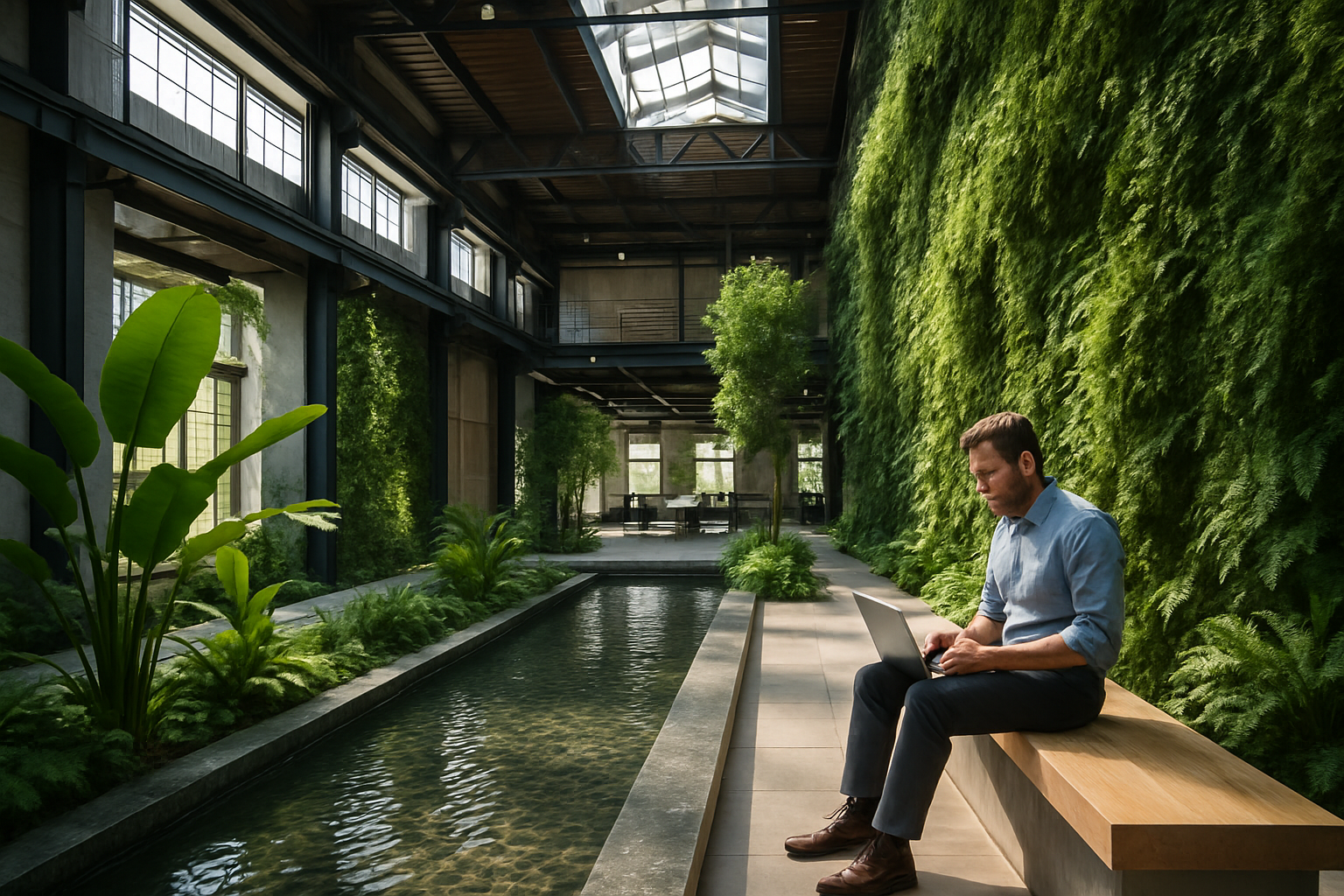Barefoot Running: Rediscovering Natural Movement in Sport
In a world dominated by high-tech athletic gear, a quiet revolution is taking place. Athletes are shedding their cushioned shoes and embracing the simplicity of barefoot running. This ancient practice, once the norm for our ancestors, is now gaining traction among modern runners seeking a more natural and efficient approach to their sport.

The Historical Footprint of Barefoot Running
Long before the invention of cushioned running shoes, humans traversed vast distances on bare feet. Our ancestors relied on their natural biomechanics to hunt, gather, and survive. This innate ability to run efficiently without footwear was crucial to human evolution and survival.
In many cultures, barefoot running remained the norm well into the 20th century. The legendary Abebe Bikila of Ethiopia famously won the 1960 Olympic marathon running barefoot, setting a new world record in the process. His victory not only showcased the potential of barefoot running but also challenged the growing dominance of modern running shoes.
As urbanization and industrialization progressed, shoes became a necessity for protection against man-made surfaces. The running shoe industry boomed in the 1970s, promising enhanced performance and injury prevention. However, this shift away from natural running form may have inadvertently altered our biomechanics, leading to a host of running-related injuries.
The Science of Barefoot Biomechanics
The resurgence of interest in barefoot running has sparked extensive research into human biomechanics. Studies have revealed significant differences in running form between shod (wearing shoes) and barefoot runners.
When running barefoot, individuals tend to land on the forefoot or midfoot, rather than the heel. This natural landing pattern distributes impact forces more evenly across the foot and leg, potentially reducing the risk of certain injuries. The proprioceptive feedback from the ground allows for better balance and coordination, enhancing overall running efficiency.
Research has also shown that barefoot running can strengthen the muscles, tendons, and ligaments of the feet and lower legs. This increased strength and flexibility may contribute to improved overall foot health and reduced risk of common running injuries such as plantar fasciitis and shin splints.
However, it’s important to note that transitioning to barefoot running requires patience and gradual adaptation. The muscles and tendons need time to strengthen, and the skin on the soles of the feet must toughen to withstand various surfaces.
Benefits and Challenges of Barefoot Running
Proponents of barefoot running cite numerous benefits, both physical and mental. Many report improved running form, increased foot strength, and enhanced proprioception. The direct contact with the ground can lead to a more mindful running experience, fostering a deeper connection with one’s body and the environment.
From a performance standpoint, some runners find that barefoot running helps them maintain a more efficient stride, potentially leading to improved speed and endurance. The reduced weight of not wearing shoes can also contribute to a more effortless running experience.
However, barefoot running is not without its challenges. The transition period can be difficult, often accompanied by muscle soreness and potential injuries if not approached gradually. Running on rough or hazardous surfaces poses risks of cuts, bruises, and other foot injuries. Additionally, extreme weather conditions, both hot and cold, can make barefoot running impractical or even dangerous in certain environments.
Barefoot Running Techniques and Training
Adopting a barefoot running style requires more than simply removing one’s shoes. Proper technique is crucial to reap the benefits and avoid injury. The key lies in developing a forefoot or midfoot strike, maintaining a higher cadence, and keeping a relaxed, upright posture.
Beginners are advised to start with short distances on smooth, even surfaces. Grass, sandy beaches, or a running track can provide ideal starting grounds. Gradually increasing distance and varying terrain helps build strength and adaptability in the feet and lower legs.
Many coaches recommend incorporating barefoot walking and standing exercises into daily routines to strengthen feet muscles and improve balance. Specific foot strengthening exercises, such as toe spreads and calf raises, can also aid in the transition to barefoot running.
It’s crucial to listen to one’s body during this process. Any pain or discomfort should be addressed immediately, and progress should be slow and steady. Many runners find success in alternating between barefoot running and traditional shod running as they build their barefoot endurance.
The Barefoot Running Movement and Its Impact on the Sports Industry
The growing popularity of barefoot running has not gone unnoticed by the sports industry. While it might seem counterintuitive for shoe companies to promote barefoot running, many have adapted by developing minimalist shoes that aim to mimic the barefoot experience while providing some protection.
These “barefoot” or minimalist shoes typically feature thin, flexible soles with minimal cushioning and no heel elevation. They’re designed to allow natural foot movement while offering protection against rough surfaces. This trend has expanded beyond running, influencing shoe design in other sports and even casual footwear.
The barefoot movement has also spurred innovation in running surface design. Some communities have installed specially designed barefoot-friendly paths in parks and recreational areas, encouraging natural movement and foot health.
Moreover, the principles of barefoot running have influenced training methodologies across various sports. Many athletes now incorporate barefoot exercises into their routines to improve foot strength, balance, and overall biomechanics.
Barefoot Running in Different Environments
While the concept of barefoot running might evoke images of pristine beaches or grassy fields, practitioners have adapted the practice to various environments. Urban barefoot runners navigate city sidewalks and parks, developing an acute awareness of their surroundings and the surfaces beneath their feet.
Trail running presents unique challenges and rewards for barefoot enthusiasts. The varied terrain of forest paths and mountain trails offers a full-body workout, engaging stabilizing muscles and enhancing proprioception. However, it also requires extreme caution and gradual adaptation to avoid injuries from rocks, roots, and other natural obstacles.
In colder climates, some barefoot runners have pushed the boundaries of the practice, developing techniques for running on snow and ice. While this extreme version of barefoot running is not for everyone, it showcases the adaptability of the human body and the lengths to which some enthusiasts will go to maintain their barefoot lifestyle.
The Role of Barefoot Running in Injury Prevention and Rehabilitation
One of the most debated aspects of barefoot running is its potential role in injury prevention and rehabilitation. While research in this area is ongoing, many physical therapists and sports medicine professionals have begun incorporating barefoot or minimalist shoe exercises into their treatment protocols.
For runners plagued by chronic injuries, transitioning to a barefoot or minimalist approach can sometimes provide relief. The change in running form often associated with barefoot running may help alleviate stress on problematic areas, such as the knees or hips. Additionally, the strengthening of foot and ankle muscles can contribute to improved overall lower body stability and function.
However, it’s crucial to note that barefoot running is not a panacea for all running-related injuries. Some individuals may find that their biomechanics or particular conditions make barefoot running unsuitable. As with any significant change in training regimen, consultation with a healthcare professional is advisable before transitioning to barefoot running, especially for those with pre-existing injuries or conditions.
Barefoot Running and Performance Enhancement
While much of the discourse around barefoot running focuses on its potential health benefits, there’s growing interest in its impact on athletic performance. Some elite athletes have incorporated barefoot training into their regimens, citing improved form, increased foot strength, and enhanced proprioception as key benefits.
In endurance events, the potential weight savings of running without shoes can be significant over long distances. Some ultra-runners have successfully completed races barefoot, arguing that the increased sensory feedback allows them to respond more quickly to changing terrain and maintain better form throughout grueling events.
Sprinters and track athletes have also experimented with barefoot training, often as a means to improve explosive power and foot strike efficiency. While most still compete in specialized track spikes, the principles learned from barefoot running can translate into improved performance even when wearing shoes.
However, it’s important to note that the performance benefits of barefoot running can vary greatly between individuals. Factors such as foot structure, running style, and specific event demands all play a role in determining whether a barefoot approach will enhance or hinder performance.
The Future of Barefoot Running
As research continues and more athletes experiment with barefoot running, the practice is likely to evolve. We may see further innovations in minimalist footwear design, aiming to provide the benefits of barefoot running with added protection for various environments and activities.
The principles of natural movement championed by barefoot running enthusiasts are also influencing broader discussions about human biomechanics and physical education. Some schools have begun incorporating barefoot activities into their physical education programs, aiming to promote better foot health and movement patterns from an early age.
In the realm of competitive sports, it’s possible we’ll see more events that cater specifically to barefoot runners, celebrating the unique challenges and skills associated with this form of running. Already, some ultra-marathons and trail running events feature barefoot categories, and this trend may expand to other disciplines.
As urban planning evolves, we might also witness the development of more barefoot-friendly spaces in cities, with dedicated paths and areas designed to allow safe, natural movement. This could contribute to a broader shift in how we think about our built environment and its impact on human health and movement.
Embracing the Barefoot Philosophy Beyond Running
The principles underlying barefoot running extend far beyond the act of running itself. Many proponents view it as part of a broader philosophy emphasizing natural movement, mindfulness, and connection with one’s environment.
This barefoot philosophy has influenced other sports and fitness practices. Barefoot training is becoming increasingly common in gym settings, with exercises designed to strengthen feet and improve overall balance and stability. Yoga and martial arts, which have long emphasized barefoot practice, have seen renewed interest in the biomechanical benefits of natural foot movement.
Even in daily life, there’s a growing awareness of the potential benefits of spending more time barefoot. Some workplaces now allow or even encourage barefoot options, citing improved comfort and potential health benefits for employees.
This shift towards embracing our natural biomechanics isn’t limited to adults. There’s growing interest in the impact of footwear on children’s developing feet, with some pediatric experts advocating for more barefoot time to promote healthy foot development and movement patterns.
The Psychological Aspects of Barefoot Running
Beyond the physical aspects, barefoot running often has profound psychological effects on practitioners. Many report a heightened sense of awareness and connection to their environment when running without shoes. This increased mindfulness can turn a run into a meditative experience, reducing stress and enhancing overall well-being.
The act of running barefoot also requires a level of mental resilience and adaptability. Runners must remain constantly aware of their surroundings, making split-second decisions about foot placement and navigating various surfaces. This heightened state of awareness can translate into improved focus and decision-making skills in other areas of life.
For some, barefoot running represents a form of personal challenge and growth. Overcoming the initial discomfort and societal norms around footwear can boost confidence and encourage individuals to question other long-held assumptions about their physical capabilities.
Barefoot Running in Different Cultures
While barefoot running has gained recent popularity in Western countries, it has been a way of life in many cultures for centuries. In parts of Africa, South America, and Asia, running and walking barefoot remain common practices, often out of necessity rather than choice.
These cultures offer valuable insights into the long-term effects of barefoot living. Studies of habitually barefoot populations have shown differences in foot structure and function compared to habitually shod populations, providing clues about the potential benefits and adaptations associated with barefoot movement.
As the global barefoot running community grows, there’s an increasing exchange of knowledge and techniques between cultures. Traditional practices and indigenous wisdom about foot health and natural movement are being shared and integrated with modern scientific understanding, enriching the barefoot running experience for practitioners worldwide.
Ethical and Environmental Considerations
The barefoot running movement intersects with broader conversations about sustainability and ethical consumption. By reducing reliance on manufactured footwear, some barefoot runners aim to decrease their environmental footprint and challenge the consumerist culture often associated with sports and fitness.
There’s also growing awareness of the labor practices in the global footwear industry. Some barefoot running advocates argue that by opting out of the traditional running shoe market, they’re taking a stand against potentially exploitative manufacturing processes.
However, it’s worth noting that the barefoot and minimalist shoe market has itself become a significant industry. As with any consumer trend, there are ongoing discussions about the environmental impact of producing these specialized products and the balance between providing necessary protection and maintaining the essence of barefoot running.
Conclusion: The Ongoing Journey of Barefoot Running
Barefoot running represents more than just a fitness trend; it’s a re-examination of our relationship with our bodies and the environment. As research continues and more people experiment with this ancient yet revolutionary approach to movement, we’re likely to gain deeper insights into human biomechanics, injury prevention, and athletic performance.
While barefoot running may not be suitable for everyone, its principles of natural movement, mindfulness, and connection with our environment offer valuable lessons for all athletes and fitness enthusiasts. Whether one chooses to run completely barefoot, in minimalist shoes, or in traditional running footwear, the barefoot movement encourages us to listen to our bodies, question established norms, and explore the amazing capabilities of the human form.
As we continue to navigate the complex world of sports science and athletic performance, the simplicity and wisdom of barefoot running serve as a reminder of our innate potential for natural, efficient movement. It challenges us to reconsider not just how we run, but how we move through the world, inviting us to reconnect with the ground beneath our feet and the inherent wisdom of our bodies.





